Jeweled Butterflies Welcome Spring
March 20, 2015
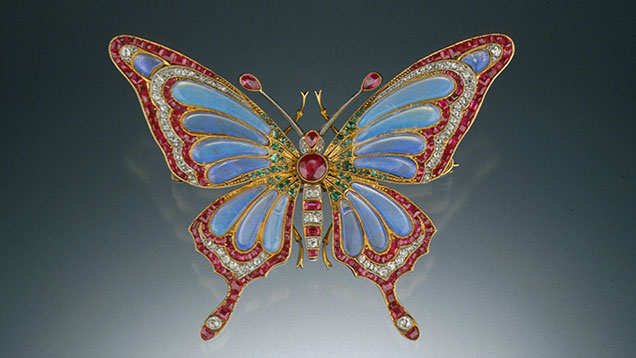
Consider how the humble caterpillar wraps itself in a cocoon. After about ten days, the butterfly emerges, the once-earthbound dweller now free to fly from leaf to leaf.
The spectacular metamorphosis of the butterfly has long been a symbol of our potential for growth. We all strive to reach greater heights, and the butterfly speaks of our yearning to soar in the direction of our dreams.
Now that you know why the butterfly charms, let’s soar across the centuries and admire some of these bejeweled beauties.
Spring Eternal, an 18K yellow gold butterfly brooch by award-winning designer Paula Crevoshay, has a whimsical, dainty quality. Delicate lacework mirrors the papery wings of a real butterfly. Pink and yellow sapphires dot the butterfly’s wings, adding splashes of color. The pearl that is the body of the butterfly and the moonstone eyes evoke shimmering moonlight.
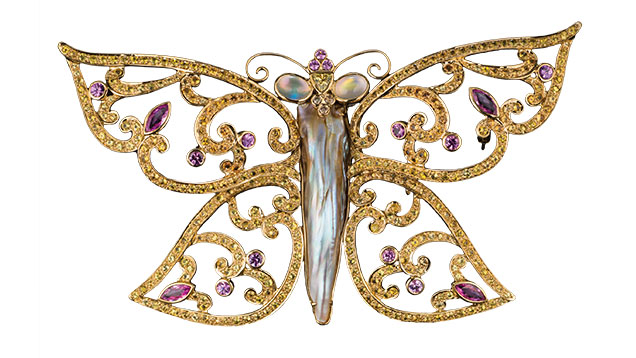
Photo courtesy Paula Crevoshay
Buzz Gray and Bernadine Johnston, the creators of this complex brooch, are famous for selecting and cutting unusual gemstones. Their masterful handiwork and gemstone selection makes this butterfly take flight.The vivid orange spessartine that is the body stands in sharp contrast to its delicate enamel wings, giving it a luminous glow. Black accents on the wings fall in symmetrical patterns, which are exceptionally difficult to create. These are some of the little details that make this a masterpiece.
Orange spessartine garnets from the Little Three Mine in Ramona, California, brighten this brooch, along with colorless diamonds and green tsavorite garnets from Kenya.
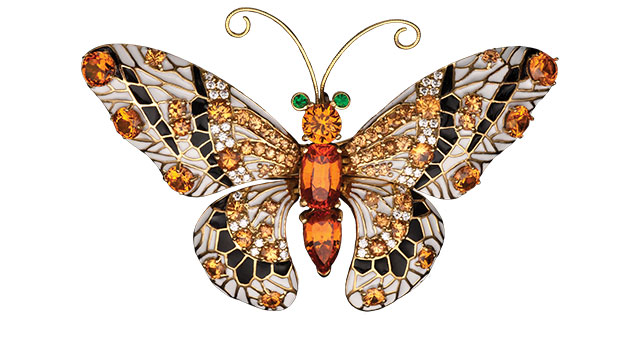
Photo courtesy Buzz Gray and Bernadine Johnston
Diamond cutting methods were rudimentary when this antique piece (circa 1850) was made, but notice how the stones in the wings are graduated in size, starting as small flecks at the base and growing to larger rose-cut ones at the tips. This accomplishment would have been quite a challenge 250-plus years ago, and shows the craftsmanship of the designer.Another nice embellishment is the scalloped edges of the wings, which give the butterfly a lifelike appearance. The brooch was probably worn with pearls or ribbons, or as a hairpiece.
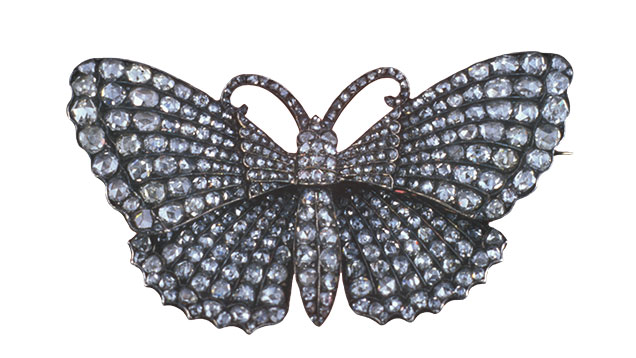
Photo courtesy Neil Lane Collection
This exquisite butterfly is particularly lifelike. Two rose-cut diamonds at the tip of the wings imitate the camouflage patterns of real butterflies.Brilliant magenta and cobalt-blue sapphires that are the wings make for spectacular contrasts, and reveal exceptional micro-pavé work. The blackened gold antennae is a soothing counterpoint to the clash of colors.
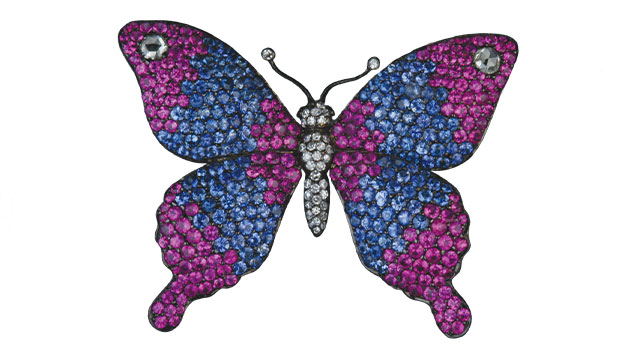
Gift of Dr. Gary R. and Barbara E. Hansen
A beautifully cut peridot is the body of this luminous butterfly. The asymmetrical patterns in the wings are reminiscent of Art Nouveau jewelry; the intricate metal work evokes veins.One novel quality about this piece is that the wings are on springs (called En Tremblant), so they move with the wearer. An impressive and difficult design feat, En Tremblant makes the butterfly more than a static creation, but a piece that flutters as if it is alive.
En Tremblant was first introduced in the late 18th century in hair ornaments and became fashionable in diamond jewelry in the mid-19th century.
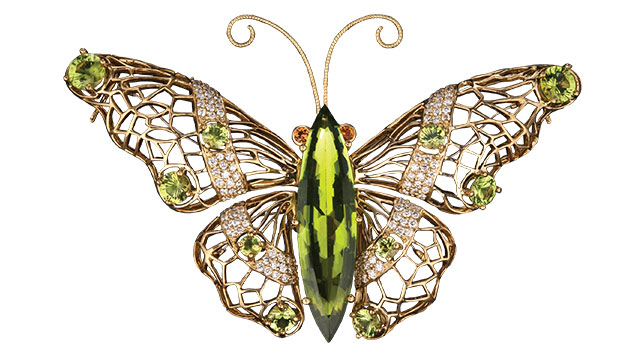
Photo courtesy Buzz Gray and Bernadine Johnston
Editor's Note
This article was originally published in the Winter 2014 edition of the Education Quarterly under the name, "Transformation." The original publish date of 12/26/2013 has been modified.
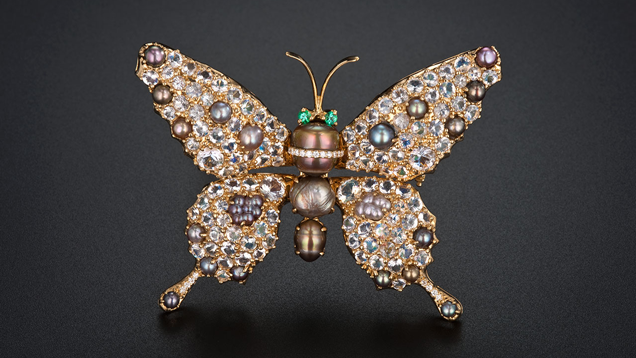
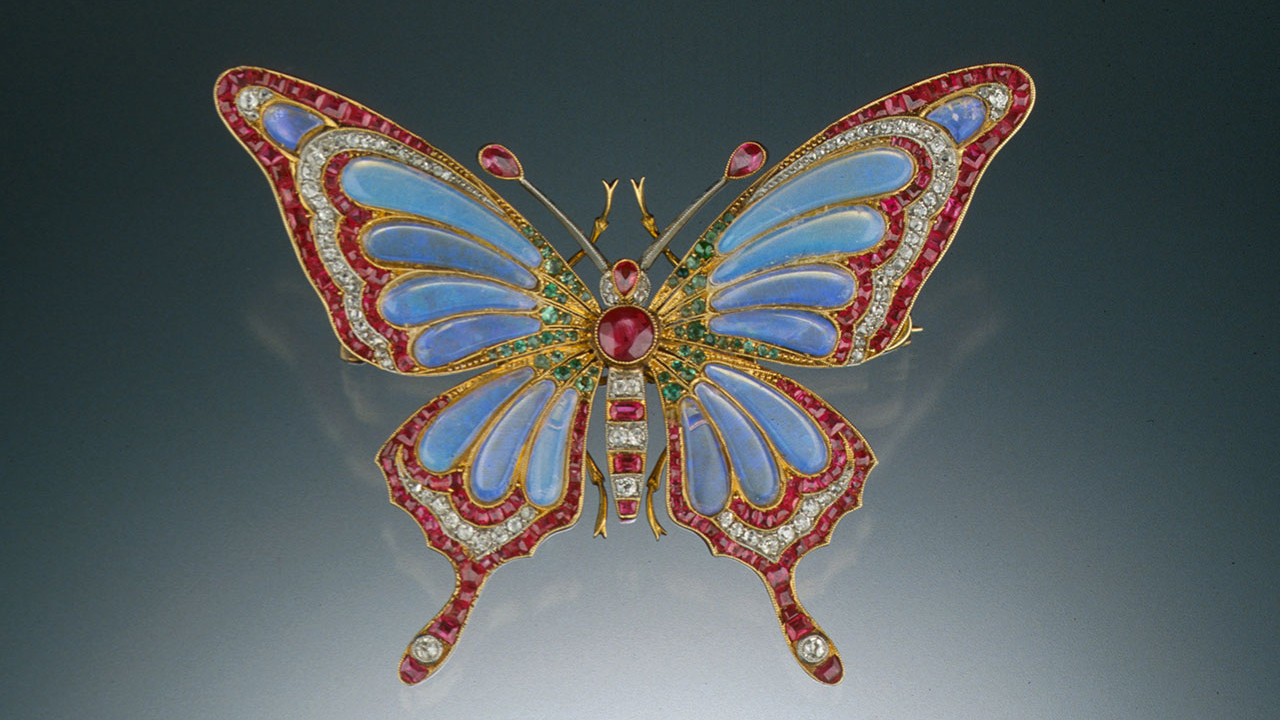

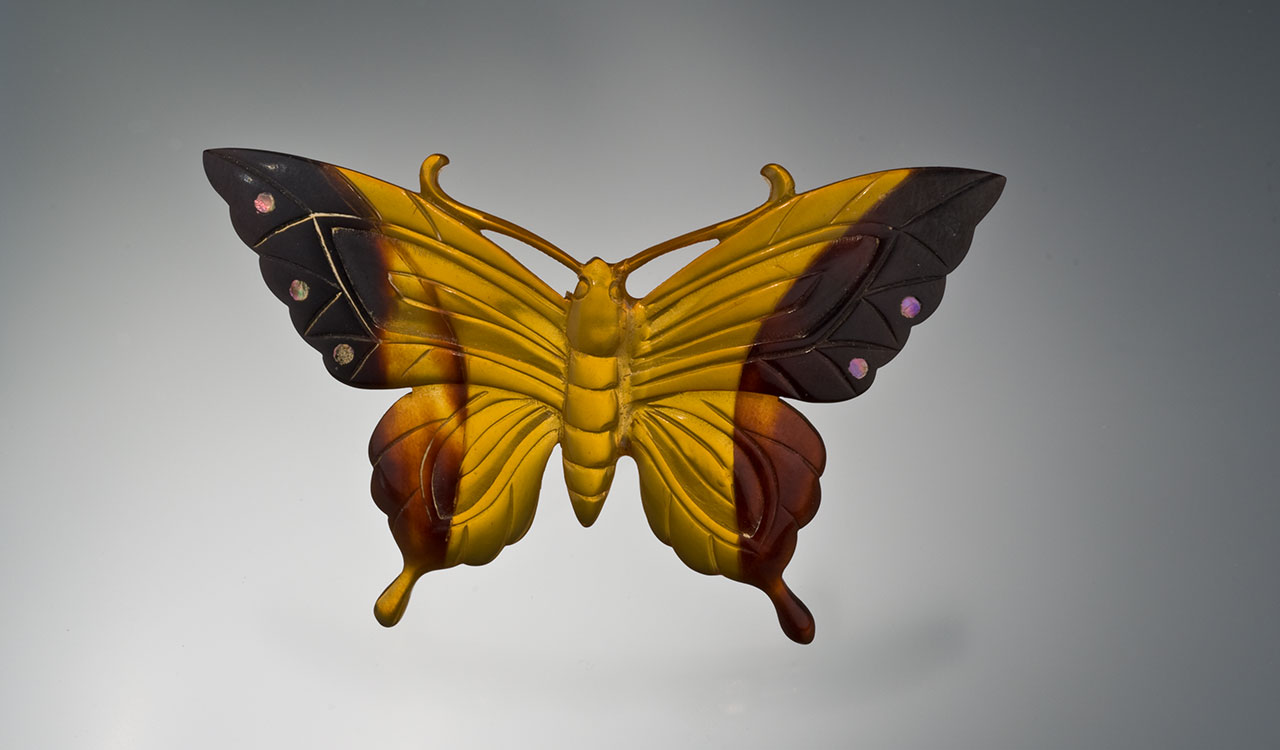
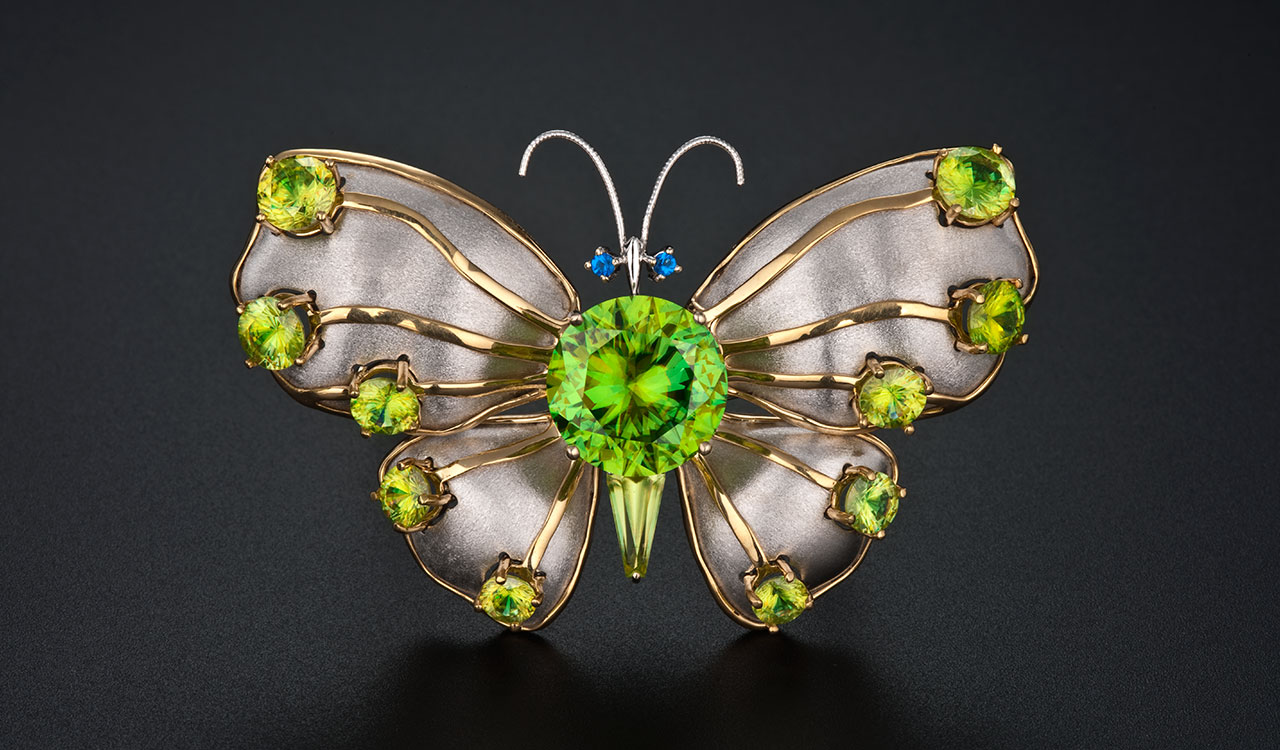




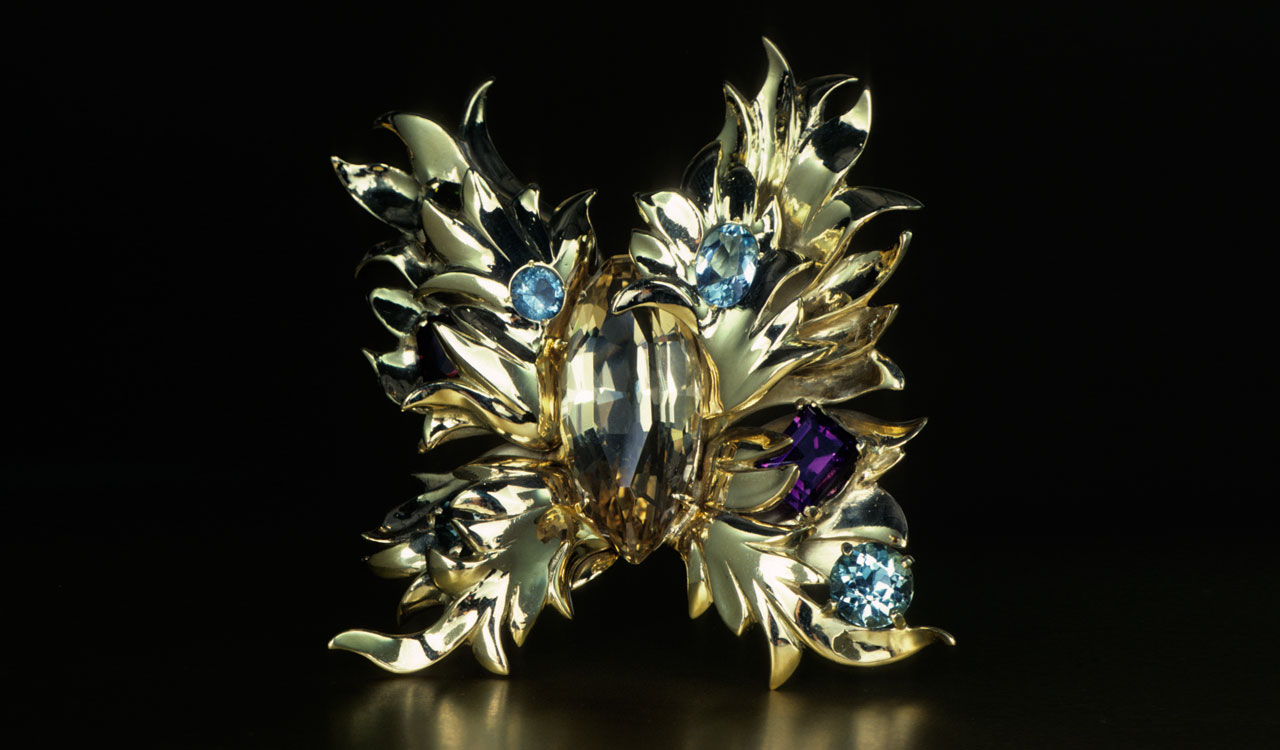
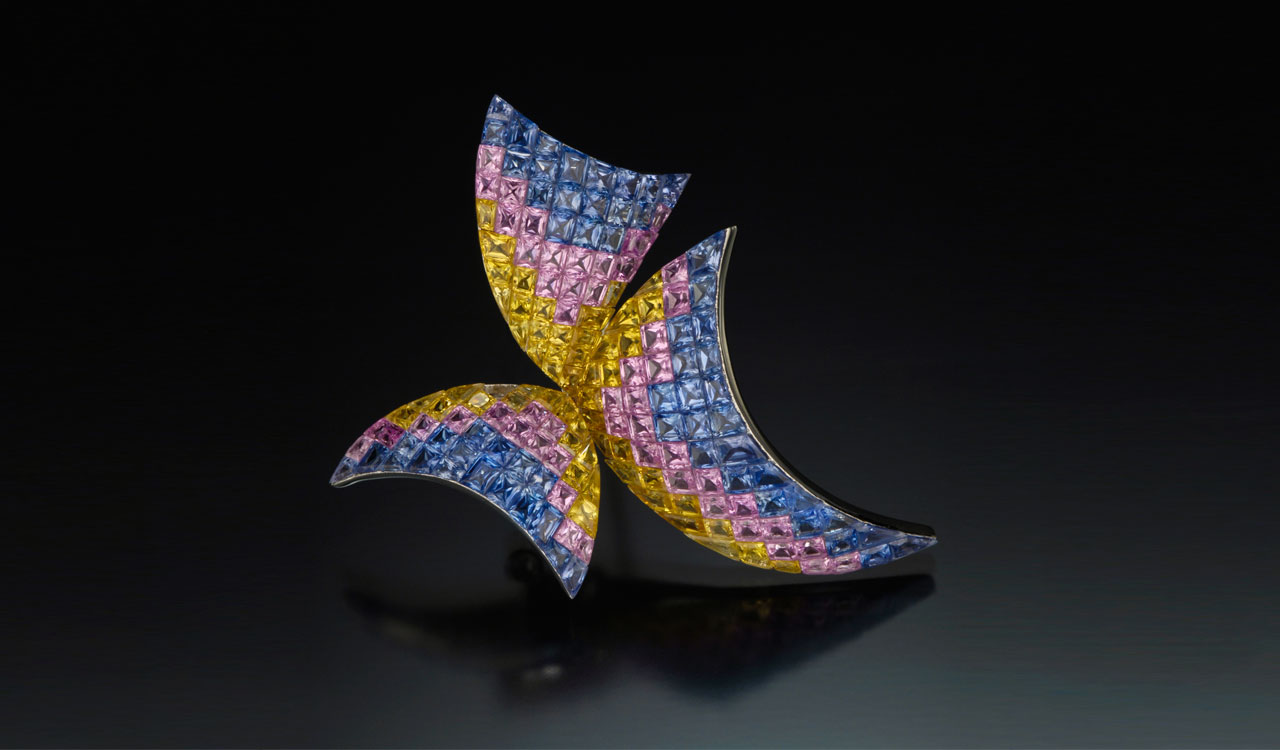
.jpg)


